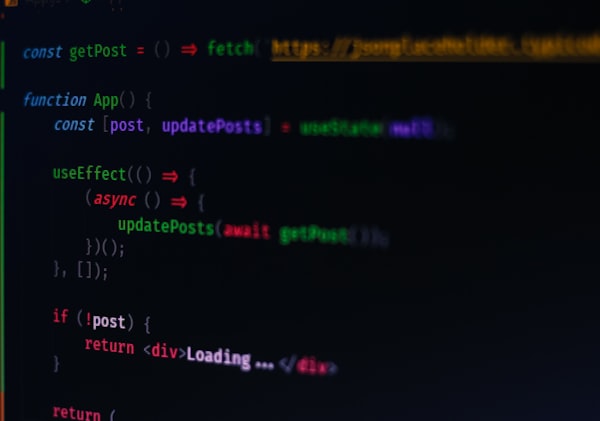1. Understanding the Concept of JavaScript Promises
Imagine you've placed an order at your favorite pizza joint. You're there in your comfy pajamas, belly rumbling, eagerly waiting for that warm cheesy goodness. But wait, this isn't instant pizza teleportation (as much as we wish it were). Your pizza is a Promise - an agreement that it will arrive in the future. And while it's not here yet, you can still continue with your life (or Netflix binge), knowing that it will eventually get there. Welcome to the world of JavaScript Promises!
JavaScript Promises are like our pizza scenario - they handle actions that don’t occur instantly but are expected in the future. The "pizza" here could be data from an API, a user input, a file being read, etc. Promises are used to manage asynchronous operations in JavaScript, acting as placeholders for the future outcome of an operation. They have three states:
- Pending: The pizza is still in the oven.
- Fulfilled: Ding Dong! Your pizza has arrived.
- Rejected: Sorry, the delivery guy dropped your pizza. No, really.
Promises can be a great tool to avoid callback hell (a real place, ask any JavaScript developer). They make asynchronous code more readable and manageable, a big step up from callback functions and a definite step towards enjoying your coding pizza hot and fresh!
2. The Role of Promises in Asynchronous JavaScript
What's the real magic of pizza delivery? You can do other things while you wait for it! Try doing jumping jacks or finally beating that tricky level in Candy Crush. Asynchronous, right? Similarly, JavaScript doesn't have to twiddle its thumbs while it waits for a lengthy operation to finish. JavaScript is a single-threaded language, and it can't afford to sit idly by, counting dust particles when there are other tasks it could be performing. That's where JavaScript Promises, our pizza delivery heroes, swoop in!
In JavaScript's event-driven ecosystem, it's as asynchronous as a disco on roller skates. Operations like fetching data from a server, reading files, or timeouts don't happen instantaneously. While these operations are happening, your JavaScript can twirl around, sipping an electronic mocktail, and execute other tasks. How's that for efficiency?
Promises are JavaScript's way of saying, "Hey, this might take a while, but I promise (wink, wink) I'll let you know when it's done, and here's what I'll do when that happens." They're an elegant way to handle future events without blocking the rest of your code, wrapping those time-consuming operations in a neat little package that JavaScript can handle whenever it's ready.
So next time you're wondering why your JavaScript behaves like a multitasking octopus, remember that it's just keeping its promises, continuing to dance its asynchronous jig!
3. Steps to Create a Promise in JavaScript
Ready to start cooking your own pizza, or in JavaScript terms, creating your own Promise? Fear not, for we have the perfect recipe to create a delicious, mouthwatering Promise!
Get Your Ingredients Ready: Just like any good pizza, a JavaScript Promise starts with the freshest ingredients. These ingredients are two functions: resolve and reject.
let myFirstPromise = new Promise((resolve, reject) => { /* Your Promise code here */ });
This code is the equivalent of laying out your pizza dough (creating a new Promise) and prepping your sauce and toppings (the resolve and reject functions).
Add Toppings and Bake: Now, let's throw in some toppings and bake our pizza. This is where we put in the actual Promise code.
let myFirstPromise = new Promise((resolve, reject) => {
let pizzaBaked = true; // change this to see how the Promise behaves
if (pizzaBaked) {
resolve('Pizza is ready!'); // Pizza’s done! Call the resolve function
} else {
reject('Pizza burnt!'); // Oops, something went wrong. Call the reject function
}
});
If your pizza is perfectly baked (pizzaBaked is true), then you'll resolve the Promise, serving up a piping hot pizza. If something goes wrong, you'll reject the Promise, alerting everyone to the charred catastrophe.
Serve or Apologize: Finally, we need to handle the outcomes of our Promise. Are we feasting on a delicious pizza or mourning a blackened disaster?
myFirstPromise
.then(pizza => console.log(pizza)) // Output: 'Pizza is ready!'
.catch(error => console.error(error)); // Output if rejected: 'Pizza burnt!'
Our then method is the victorious feast, called if the Promise is resolved successfully. The catch method is the sincere apology, called if something goes wrong.
And voila! You've created your first JavaScript Promise, as easy as baking a pizza! So roll up your coding sleeves and start cooking up some asynchronous goodness.
4. Key Components of a JavaScript Promise: Resolve and Reject
Creating a JavaScript Promise is like hosting a party. There are two crucial roles to fill at this shindig: the life of the party (Resolve) and the designated driver (Reject). Let's shine a disco light on these two, shall we?
Resolve: The Life of the Party
Resolve is the one everyone is waiting for. When Resolve shows up, it's time to celebrate. In our JavaScript Promise, Resolve is the function we call when our operation is successful.
let myParty = new Promise((resolve, reject) => {
let partyRocks = true; // This party is amazing!
if (partyRocks) {
resolve('This party is off the hook!'); // Party’s awesome, call the resolve function
} else {
reject('Party’s a dud. Let’s bail.'); // Something’s off, call the reject function
}
});
In this example, if the partyRocks, resolve gets called, and we all celebrate. But what happens if the party turns out to be a flop?
Reject: The Designated Driver
Enter reject, the designated driver. If things go south, reject is there to call it like it is, handle the situation, and ensure everyone gets home safely. When our JavaScript operation fails, we call the reject function.
myParty
.then(party => console.log(party)) // Output if resolved: 'This party is off the hook!'
.catch(reason => console.error(reason)); // Output if rejected: 'Party’s a dud. Let’s bail.'
In this code, if resolve gets called, then kicks into action and logs 'This party is off the hook!'. However, if reject is called, catch springs into action, logging 'Party’s a dud. Let’s bail.'.
And there you have it, the yin and yang, the Jekyll and Hyde, the Resolve and Reject of JavaScript Promises. Master these two, and you'll be the life (and savior) of any JavaScript Promise party. Let's keep the asynchronous fiesta going!
5. Error Handling in JavaScript Promises
Error handling in JavaScript Promises is akin to our trusty old friend, the superhero sidekick. You know, the ones that swoop in when the hero stumbles, keeping the city (or in our case, the code) safe from chaos and destruction.
In the land of JavaScript Promises, we don't have capes or utility belts, but we do have our own sidekick: the catch() method. catch() is always there, watching from the shadows, ready to jump in when things go awry.
When we're creating our Promise, if something unexpected happens, we have the reject() function to, well, reject the Promise. The catch() method is where we handle these rejections.
myFirstPromise
.then(pizza => console.log(pizza)) // Output if resolved: 'Pizza is ready!'
.catch(error => {
console.error(error); // Output if rejected: 'Pizza burnt!'
return orderBurger(); // Plan B: Order a burger
});
In this example, if our pizza Promise gets rejected (maybe the pizza got burnt), the catch() method jumps into action, logging the error and executing our Plan B: ordering a burger.
But that's not all! Promises also come with a safety net called the finally() method. Whether our Promise gets resolved or rejected, finally() will run regardless, like the post-credits scene of a superhero movie.
myFirstPromise
.then(pizza => console.log(pizza))
.catch(error => console.error(error))
.finally(() => console.log('Well, we tried to make a pizza!'));
In this code, whether our pizza is delicious or charred to a crisp, finally() will log 'Well, we tried to make a pizza!'.
Just remember, even superheroes can stumble, and even the best Promises can reject. But with catch() and finally() by our side, we're always prepared for whatever asynchronous calamity JavaScript might throw our way!
6. Working with Promise Methods: then(), catch(), and finally()
Let's say you've ordered a mystery box. The excitement is real, but you've got three possible outcomes: it could be amazing (a shiny new gadget!), it could be terrible (a giant rubber duck?), or it could be just plain weird (a bathtub plug collection...really?).
In the realm of JavaScript Promises, these mystery box scenarios play out using three methods: then(), catch(), and finally().
then(): The Shiny Gadget
then() is the moment when you open your mystery box and find a shiny new gadget. Woohoo! You've hit the jackpot. then() is the method we use when our Promise is resolved successfully.
let myMysteryBox = new Promise((resolve, reject) => {
let boxContents = "shiny gadget"; // Change this to see different results
if (boxContents === "shiny gadget") {
resolve('Awesome! You got a shiny new gadget.');
} else {
reject('Aw, shucks. Better luck next time.');
}
});
myMysteryBox.then(message => console.log(message)); // Output if resolved: 'Awesome! You got a shiny new gadget.'
catch(): The Giant Rubber Duck
The catch() method is your reaction when the box reveals a giant rubber duck. It's not what you were hoping for. catch() is our way of handling Promise rejections.
myMysteryBox.catch(reason => console.error(reason)); // Output if rejected: 'Aw, shucks. Better luck next time.'
finally(): The Bathtub Plug Collection
Regardless of the mystery box's content, you're left with a weird bathtub plug collection - a souvenir of your risk. The finally() method behaves similarly. It runs no matter if the Promise was resolved or rejected.
myMysteryBox.finally(() => console.log('Well, that was a mystery box experience!')); // Always outputs: 'Well, that was a mystery box experience!'
And there you have it! Working with JavaScript Promises is like experiencing the thrills of a mystery box. Whether it's then() jumping for joy, catch() expressing disappointment, or finally() shrugging it off, these Promise methods add spice and excitement to your asynchronous JavaScript journey. Happy unboxing!
7. The Power of Promise Chaining in JavaScript
Promise Chaining in JavaScript is like a high-octane relay race, where each runner passes the baton to the next, maintaining momentum and advancing towards victory. But instead of runners, we have Promises, and instead of a baton, we have the output of each Promise.
Promise chaining is an incredibly powerful tool, allowing us to run a series of asynchronous operations one after the other, with each Promise kicking off after the previous one has resolved.
Let's take a look at how Promise chaining works, using the highly relatable example of ordering an epic feast from your favorite fast-food joint.
orderBurger() // Start the relay race!
.then(burger => { // Burger arrived! Now let's get some fries...
console.log(burger);
return orderFries();
})
.then(fries => { // Fries are here! Time for a milkshake...
console.log(fries);
return orderMilkshake();
})
.then(milkshake => { // Milkshake, check! We've got our feast
console.log(milkshake);
})
.catch(error => { // In case anything goes wrong
console.error('Order error:', error);
})
.finally(() => { // Regardless of the outcome
console.log('Our fast-food adventure is complete!');
});
In this example, orderBurger(), orderFries(), and orderMilkshake() are all Promise-based functions, possibly simulating the time it takes for each item to arrive. Notice how the output of each Promise (burger, fries, milkshake) is passed to the next then() in the chain.
By harnessing the power of Promise chaining, we can manage multiple asynchronous operations in a sequence that makes logical sense to us and to our code. It's like an amazing culinary relay race, with each Promise smoothly passing the baton to the next, eventually resulting in a fast-food feast fit for royalty. Yum!
8. Introduction to Promise.all and Promise.race Functions
Promise Chaining in JavaScript is like a high-octane relay race, where each runner passes the baton to the next, maintaining momentum and advancing towards victory. But instead of runners, we have Promises, and instead of a baton, we have the output of each Promise.
Promise chaining is an incredibly powerful tool, allowing us to run a series of asynchronous operations one after the other, with each Promise kicking off after the previous one has resolved.
Let's take a look at how Promise chaining works, using the highly relatable example of ordering an epic feast from your favorite fast-food joint.
orderBurger() // Start the relay race!
.then(burger => { // Burger arrived! Now let's get some fries...
console.log(burger);
return orderFries();
})
.then(fries => { // Fries are here! Time for a milkshake...
console.log(fries);
return orderMilkshake();
})
.then(milkshake => { // Milkshake, check! We've got our feast
console.log(milkshake);
})
.catch(error => { // In case anything goes wrong
console.error('Order error:', error);
})
.finally(() => { // Regardless of the outcome
console.log('Our fast-food adventure is complete!');
});
In this example, orderBurger(), orderFries(), and orderMilkshake() are all Promise-based functions, possibly simulating the time it takes for each item to arrive. Notice how the output of each Promise (burger, fries, milkshake) is passed to the next then() in the chain.
By harnessing the power of Promise chaining, we can manage multiple asynchronous operations in a sequence that makes logical sense to us and to our code. It's like an amazing culinary relay race, with each Promise smoothly passing the baton to the next, eventually resulting in a fast-food feast fit for royalty. Yum!
9. Practical Examples: Using JavaScript Promises in Real World Scenarios
Imagine yourself as an international superspy. Your mission, should you choose to accept it, is to navigate through real-world scenarios, armed with your trusty sidekick, JavaScript Promises.
Scenario One: Data Fetching
One of the most common uses of Promises is fetching data from an API. It's like intercepting a secret message, except it's not all that secret and pretty much anyone can request it. Still, it's pretty cool, right?
fetch('https://api.spysquad.com/missions')
.then(response => response.json())
.then(data => console.log(data))
.catch(error => console.error('Data Fetching Error:', error))
.finally(() => console.log('End of Data Interception'));
In this operation, fetch() returns a Promise. When the Promise is resolved, we can use then() to parse the response into JSON and log it. If something goes wrong, catch() jumps in to save the day.
Scenario Two: Image Loading
Let's say you're tracking an enemy agent, and you need their picture to load before you can continue your mission. Promises to the rescue!
let imgLoad = new Promise((resolve, reject) => {
let img = new Image();
img.src = 'https://agent.photos.com/agent123.jpg';
img.onload = () => resolve(img);
img.onerror = () => reject(new Error('Image Loading Error'));
});
imgLoad
.then(img => document.body.append(img))
.catch(error => console.error(error));
Here, we create a Promise that resolves when the image loads and rejects if there's an error. Once the image is loaded, we append it to the body of our document. If something goes wrong, our trusty catch() method steps in.
JavaScript Promises are our secret weapon, aiding us in these and countless other scenarios. They might not come with cool gadgets or explosive pens, but they're just as exciting and even more reliable. So, agent, ready for your next mission with Promises?
10. JavaScript Promises: Best Practices and Common Pitfalls
Imagine yourself as an international superspy. Your mission, should you choose to accept it, is to navigate through real-world scenarios, armed with your trusty sidekick, JavaScript Promises.
Scenario One: Data Fetching
One of the most common uses of Promises is fetching data from an API. It's like intercepting a secret message, except it's not all that secret and pretty much anyone can request it. Still, it's pretty cool, right?
fetch('https://api.spysquad.com/missions')
.then(response => response.json())
.then(data => console.log(data))
.catch(error => console.error('Data Fetching Error:', error))
.finally(() => console.log('End of Data Interception'));
In this operation, fetch() returns a Promise. When the Promise is resolved, we can use then() to parse the response into JSON and log it. If something goes wrong, catch() jumps in to save the day.
Scenario Two: Image Loading
Let's say you're tracking an enemy agent, and you need their picture to load before you can continue your mission. Promises to the rescue!
let imgLoad = new Promise((resolve, reject) => {
let img = new Image();
img.src = 'https://agent.photos.com/agent123.jpg';
img.onload = () => resolve(img);
img.onerror = () => reject(new Error('Image Loading Error'));
});
imgLoad
.then(img => document.body.append(img))
.catch(error => console.error(error));
Here, we create a Promise that resolves when the image loads and rejects if there's an error. Once the image is loaded, we append it to the body of our document. If something goes wrong, our trusty catch() method steps in.
JavaScript Promises are our secret weapon, aiding us in these and countless other scenarios. They might not come with cool gadgets or explosive pens, but they're just as exciting and even more reliable.








